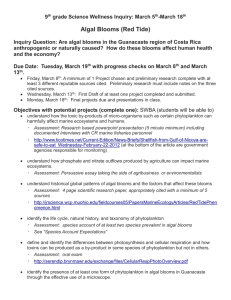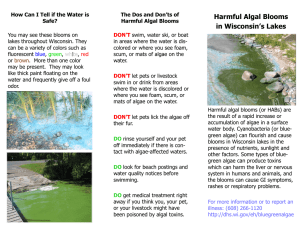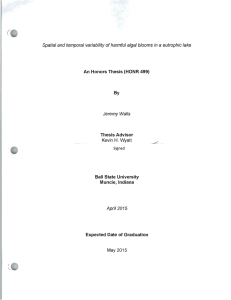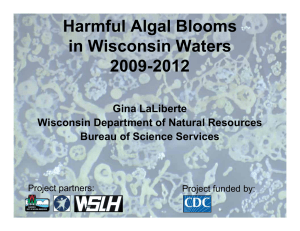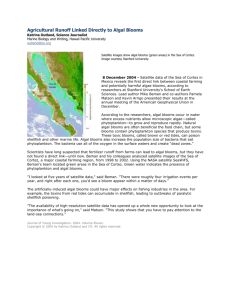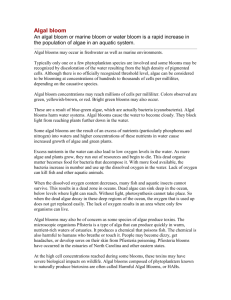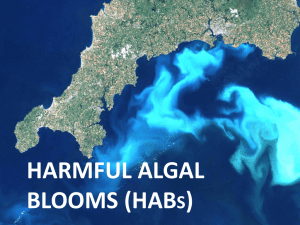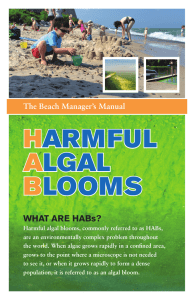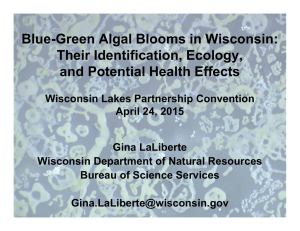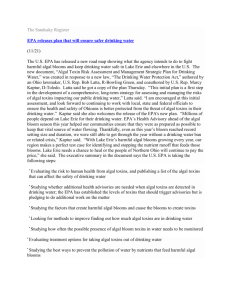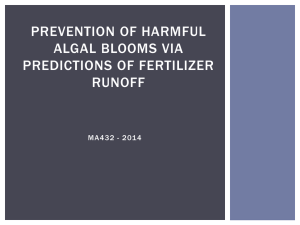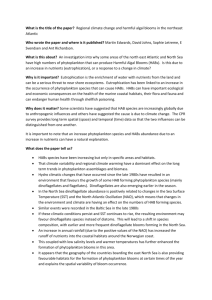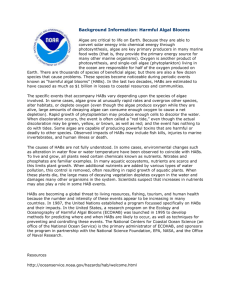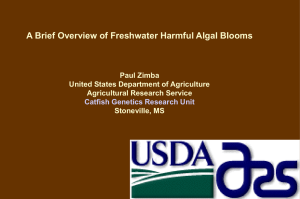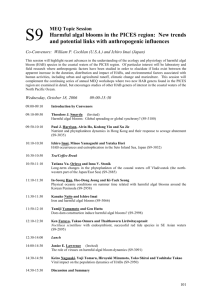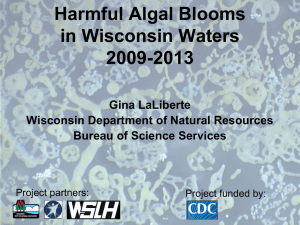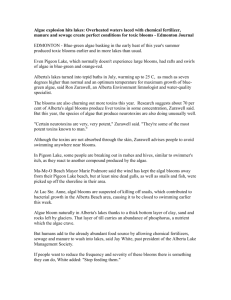CyHA Workshop Summary
advertisement
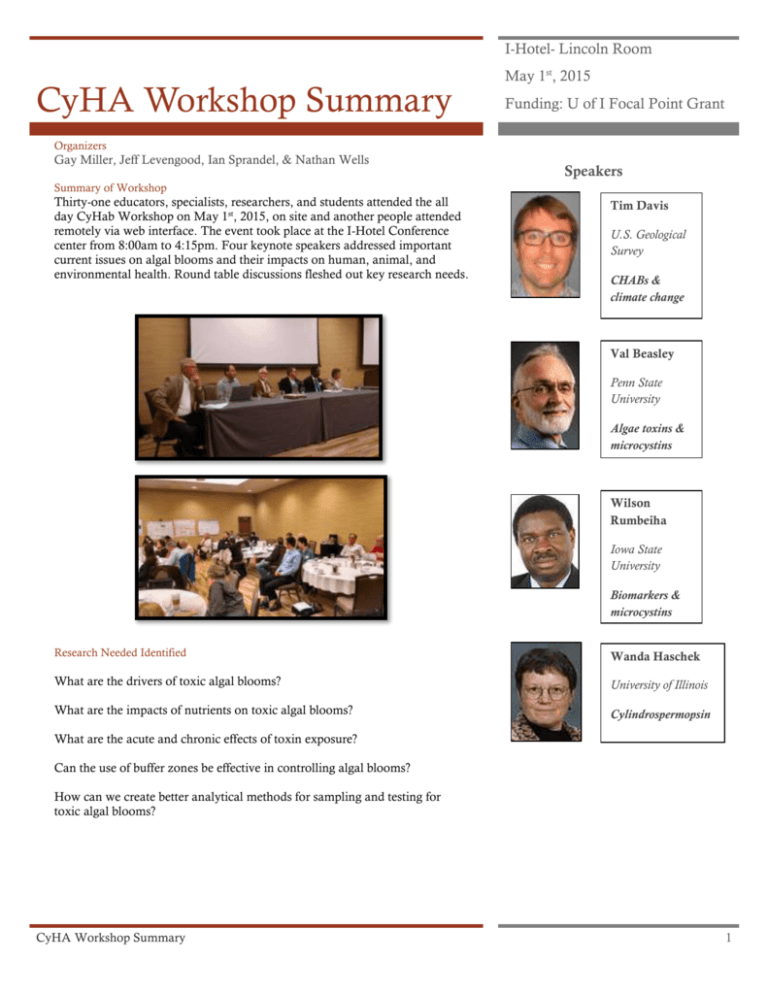
I-Hotel- Lincoln Room CyHA Workshop Summary May 1st, 2015 Funding: U of I Focal Point Grant Organizers Gay Miller, Jeff Levengood, Ian Sprandel, & Nathan Wells Speakers Summary of Workshop Thirty-one educators, specialists, researchers, and students attended the all day CyHab Workshop on May 1st, 2015, on site and another people attended remotely via web interface. The event took place at the I-Hotel Conference center from 8:00am to 4:15pm. Four keynote speakers addressed important current issues on algal blooms and their impacts on human, animal, and environmental health. Round table discussions fleshed out key research needs. Tim Davis U.S. Geological Survey CHABs & climate change Val Beasley Penn State University Algae toxins & microcystins Wilson Rumbeiha Iowa State University Biomarkers & microcystins Research Needed Identified Wanda Haschek What are the drivers of toxic algal blooms? University of Illinois What are the impacts of nutrients on toxic algal blooms? Cylindrospermopsin What are the acute and chronic effects of toxin exposure? Can the use of buffer zones be effective in controlling algal blooms? How can we create better analytical methods for sampling and testing for toxic algal blooms? CyHA Workshop Summary 1 Abstract Emerging Issues and Research on Harmful Cyanobacterial Algal Blooms Impact on Populations, Ecosystems, and Water Gay Y. Miller, Jeffrey Levengood, Sarah Steinmann, and Ian Sprandel Toxin-producing cyanobacteria are an increasing problem in bodies of water used by humans and animals. Nutrient-enrichment of water bodies and climate change are driving population explosions, or blooms of these organisms. Consumption or lysing of cyanobacteria can impose substantial health risks on human, domestic animal, wildlife, and aquatic animal health. These harmful algal blooms (HABs) kill fish by depleting oxygen, and also produce toxins (cyanotoxins) that, when consumed, can cause illness and/or death in a variety of species including humans. In humans, symptoms and lesions associated with cyanotoxin intoxication include diarrhea, skin irritation, liver damage, cancers, and rapid death by respiratory failure. The surface scums and mats that form on rivers, lakes, and ponds are visual indicators of HABs and the possibility of intoxication with water ingestion, dermal absorption, or inhalation of aerosolized toxins which can occur, e.g. during recreational water use. Also, there are substantial economic costs associated with HABs including bloom management, veterinary and medical costs, time off work, and loss of recreation revenue. Understanding of the synthesis and modes of actions of cyanotoxins has increased in recent decades. However, not every bloom produces toxins, and the environmental triggers of toxin production are not well understood. New analytical methods have been developed for the detection and quantification of cyanobacterial toxins in water and for removing these toxins from water destined for drinking. Still many knowledge gaps remain and much research needs to be done in the area of cyanotoxin removal from drinking water. Our team of faculty and graduate students has identified scientists with expertise and interest in various aspects of HABs to participate in our focal point workshop. Our objective with this focal point project is to create an interdisciplinary community of STEM-focused scholars (including faculty and graduate students) from several University of Illinois departments and associated facilities on Campus, and also scholars from other institutions who will: interact regularly in a seminar centered on presentations that focus on HABs; develop increased research capacity and human capital on cyanotoxin impacts on animal and ecosystem health, and on water quality and toxins at the University of Illinois; foster long-term institutional engagement on HABs and human, animal, and ecosystem health. Our interdisciplinary group of scientists, came together over the past academic year (2014-2015) regularly to share and discuss animal health and water quality topics related to algal blooms. We improved our ability to understand and link health of a variety of species, water quality, water and land management practices, climate change, and the associated linkages to toxin production. Special Thanks to Everyone Involved for Making this Workshop a Great Success! CyHA Workshop Summary 2 CyHA Workshop Summary 3
